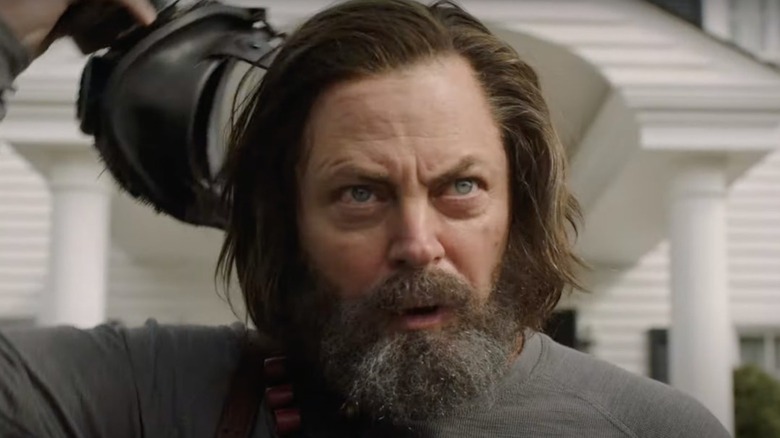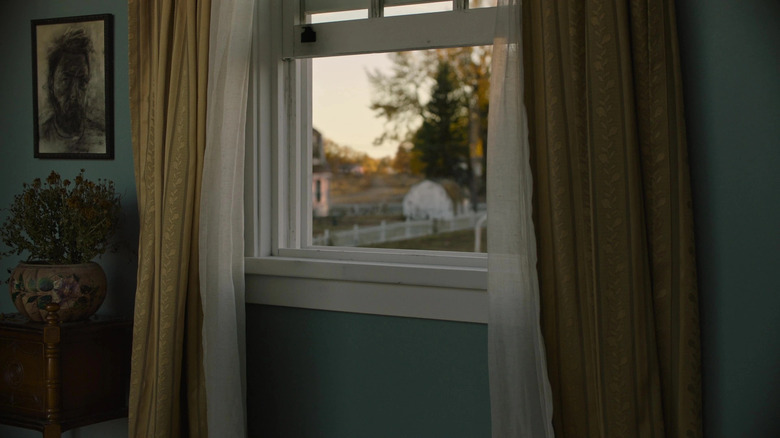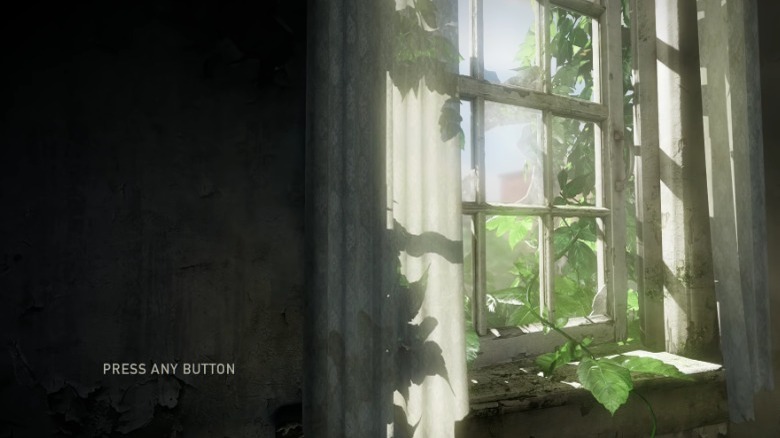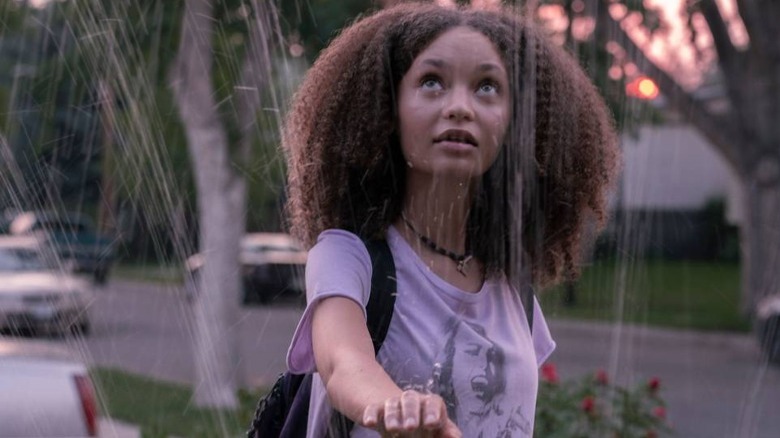This Isn't The First Time The Last Of Us Franchise Has Made Us Cry With Just A Window
This post contains spoilers for "The Last of Us" video game (which are also spoilers for the HBO television adaptation).
I had forgotten how it feels to be shattered by "The Last of Us." HBO's adaptation of Neil Druckmann's masterful video game reminded fans of that feeling this week with its third episode, which frankly may be a masterpiece in its own right. The chapter, written by series co-creator Craig Mazin and directed by "It's a Sin" filmmaker Peter Hoar, reimagines the story of video game characters Bill (Nick Offerman) and Frank (Murray Bartlett) as a delicately told later-in-life romance, one that's much more sweet than caustic this time around.
The third episode of "The Last of Us" unfolds in a way that will surprise even the most fervent game fans. Rather than leaving us with only the sour end-note of Bill and Frank's post-apocalyptic romance, we get to see their entire life together, and it unfolds with a surprising, languorous sense of love and comfort. Bill, a paranoid and mentally unwell conspiracy theorist in the game, this time is only antagonistic for a short while. Soon he grows, nurtured like a strawberry on a vine by the man he chooses to let love him.
"The Last of Us" gives Bill and Frank a better ending, too, one that's beautiful and gutting for game fans and newcomers alike. After years of happiness together, Frank decides to end his own life rather than continue through the late stages of a degenerative disease, and Bill quietly, calmly decides to go with him. The pair eat, drink, admire the town they've made, and even dress up to get married. Then they lie in bed together and drift away.
There's beauty in Bill and Frank's open window
In a note Bill leaves for Joel, he says he left the window open — to keep the house from smelling, he insists. But the last shot we see, as Linda Ronstadt croons "I think I'm gonna love you/for a long, long time," is of that open window, and outside, a glimpse of the town the two called home. It's a shot that moved me to tears before I could even understand why, but on rewatch, I realized the emotion behind it was twofold.
An open window, for Bill and for the fans who already know a version his character, is a sign of a level of peace that never seemed like it could be possible for the man. Bill waits out the early days of the Cordyceps infection in an underground bunker, fully stocked with food and, more importantly to him, weapons. He sees the world as an evil place that's constantly out to get him if he doesn't take up arms against it first. Throughout the episode, Bill quite literally lays down his arms in the presence of his lover, begrudgingly setting aside a firearm during a lunch with Joel (Pedro Pascal) and Tess (Anna Torv), and eventually letting Frank trade a weapon for strawberry seeds.
His open window, then, is a simple but powerful symbol of the way love transformed Bill. He still keeps his family as safe as he can, sure, but he's no longer driven purely by fear. He let Frank in, just as he lets the air in, and that vulnerability opened his life up in unexpectedly beautiful ways. Peace, for Bill, is like an open window. Surprisingly, this isn't the first time "The Last of Us" has hinted at that same message.
The Last of Us menu screen tells its own story
The menu screen for the 2013 Naughty Dog game version of "The Last of Us" also features a window. In fact, that's all it shows. It's an intriguing design choice for a game with so many indelible images, especially since the window itself doesn't seem to be connected to any setting players visit in the game. It's a surprisingly serene shot, with dappled sunlight shining through gauzy cream curtains. Lush greenery grows wild, the sounds of nature can be heard outside, and a tendril of a leafy plant slips under the slightly ajar casement window.
At first, the quiet peacefulness of the menu screen feels contradictory; it contrasts rather glaringly with the game's horrifying post-apocalyptic landscape. But after players beat the game in story mode, the screen changes ever-so-slightly, offering just a sliver of context for its inexplicably lush menu screen. Ellie's butterfly knife, which kept her safe throughout the game, sits perched in the corner of the windowsill. Of course, the sequel game proved that Ellie's troubles aren't over, but for this moment, the message seems clear: she doesn't need it right now. She's found a place to rest, and in a place that teems with un-threatened life, she feels safe enough to be as vulnerable as every kid deserves to be.
Love will abide
"The Last of Us: Part II" takes that message further, ending its complicated story of grief and trauma with a shot of an open window that's similar to but not identical to the menu screen shot. This time, we see Ellie's guitar in the window, and her form outside it as she walks away. It's a bittersweet moment, but I think it's more sweet than bitter. Like the rest of the window shots that come before and after it, there's something tranquil about this image of the farm Ellie called home. This doesn't feel like a goodbye to her life of domestic happiness, but a "so long for now."
There's just one more memorable window in the series. The first shot viewers see in HBO's adaptation of "The Last of Us," after the premiere episode's cold open, is of Joel's daughter Sarah's (Nico Parker) bedroom window. It's adorned with pink curtains, and decorated with trophies. In the chapters of the story to follow, we catch glimpses of windows boarded up, or broken, or so smudged from years of grime that they're tough to see through. But only a few times do we get a shot of a window like this one, and when we do, the message is always clear: there is peace here, for a moment. And peace, in a world as dangerous as this one, may as well be the same thing as love.



